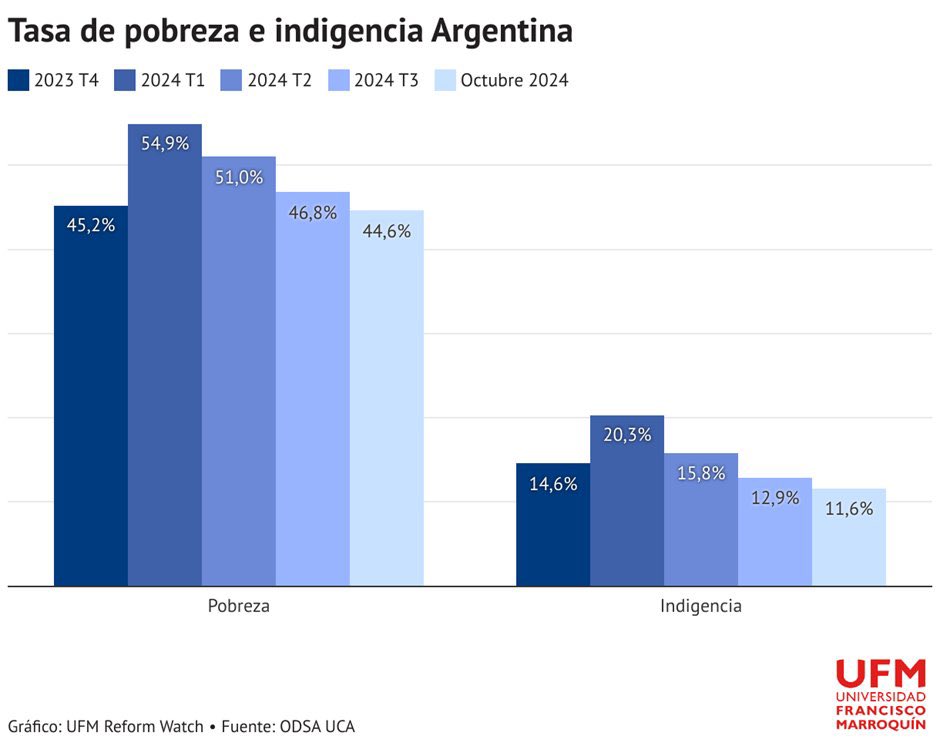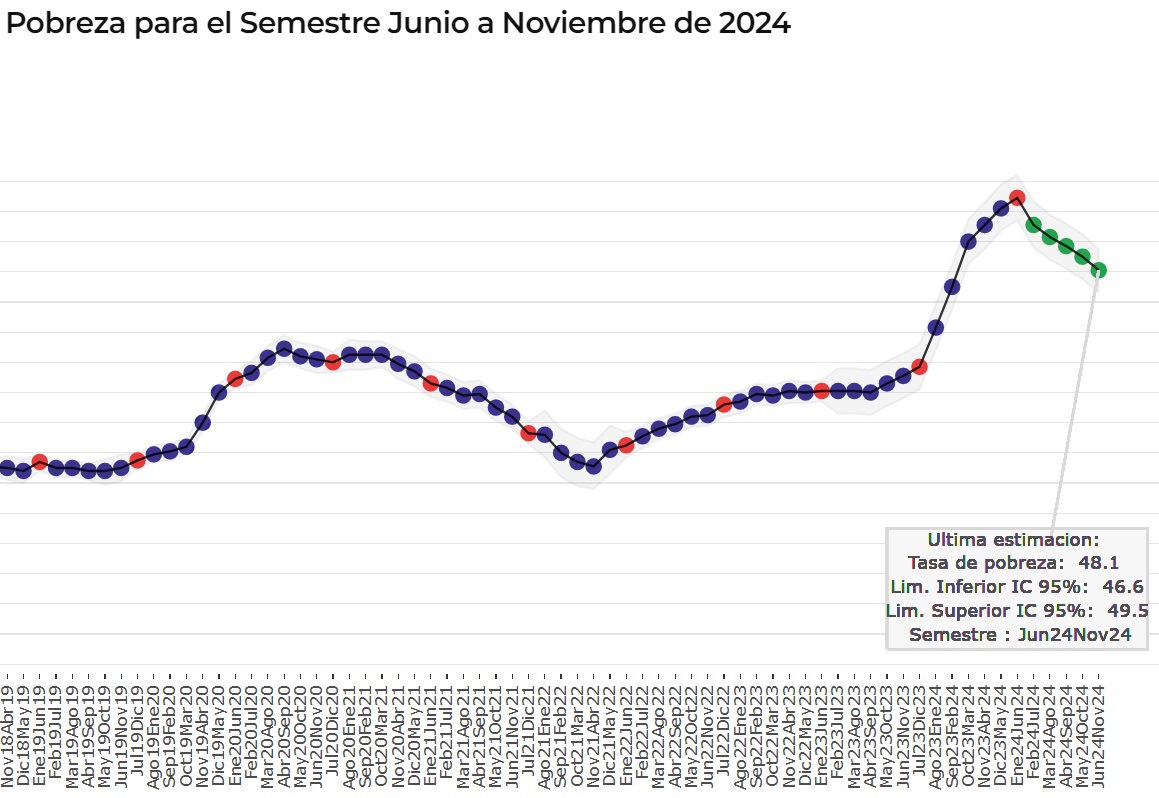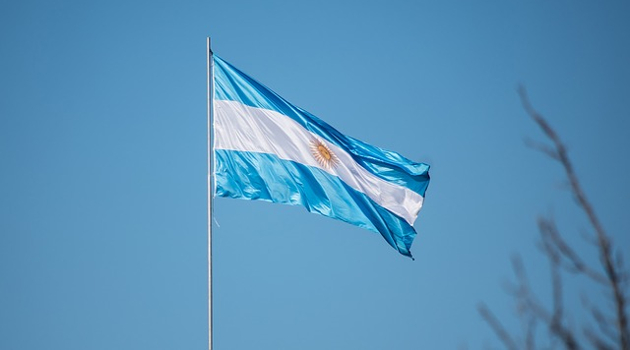Argentina’s economy suffered a dramatic decline from 1946-2023 because of statist policy.
The economy became such a disaster that voters shocked the world in late 2023 by choosing Javier Milei, a hard-core libertarian, to be their next president.
Even though the Peronists still control the legislature, Milei has been somewhat successful in pushing his laissez-faire agenda. Over the past month, I’ve assessed his performance.
- In Part 1 of this series, I showed how Javier Milei has done a great job shrinking the burden of government spending.
- In Part II, I investigated how much he might be able to improve Argentina’s ranking in Economic Freedom of the World.
- In Part III, I shared central government spending data to reveal that Milei has been outstanding rather than merely impressive.
- In Part IV, I reviewed two of the major structural obstacles to Milei’s agenda of economic reform and national revival.
- In Part V, I examined Milei’s efforts to reduce the suffocating impact of excessive regulation on Argentina’s economy.
- In Part VI, I shared a video on his impact as part of a look at the country on the one-year anniversary of his inauguration.
Today, let’s look at what has happened to the economic status of poor people since Milei took office.
This is supposed to be his weakness. A web search generates dozens and dozens of stories about Milei’s budget cuts ostensibly causing a big spike in poverty.
And poverty did jump at first, as shown in this chart based on data from the Universidad Catolica Argentina (UCA). Especially between the final quarter of 2023 and the first quarter of 2024 (“pobreza” is regular poverty and “indigencia” is even worse).

Here’s some analysis of the data from Charles Lajoie.
…let’s see the UCA’s projections for the third trimester of 2024 (average of July, August and September) and the month of October 2024. …its microsimulations have projected a 46.8% poverty rate for the first period and a 44.6% poverty rate for October. We can also observe that the poverty rate for the fourth trimester of 2023 (average of October, November and December) was 45.2%, a higher rate than their latest projection. However, even this number is a bit misleading if used as the pre-Milei data point, since the poverty rate of the month Milei took office stood at 49.5%, according to the same university… Therefore, if these projections are accurate, the poverty rate was already 5.3 percentage points lower 2 months ago than at the beginning of Javier Milei’s presidency.
I’m not a big believer in drawing sweeping conclusions based on less than a year’s worth of data, but I will say that these numbers are much better than I would have predicted.
Milei is making radical changes and people losing government jobs and/or welfare benefits won’t necessarily have immediate success transitioning to the productive sector of the economy.
Especially since there’s also usually some short-run pain when an economy is weaned off the sugar high of easy money and inflation.
So I expected at least one year of bad economic news from Argentina before a rebound. Yet it seems the good news is already beginning to materialize.
Let’s now dig into some more numbers, this time from the Universidad Torcuato Di Tella.
Once again, there was an increase in poverty immediately after Milei took office. But now the trend is very positive.

Now let’s look at some more analysis from Charles Lajoie.
The Universidad Torcuato Di Tella has also projected a reduction of the poverty rate since December of 2023, their latest number indicating that the poverty rate for the bimester of October and November stood at 45.7%… Putting this together with the findings of the UCA, taking into account the fact that the latest estimate we have is a bimester starting 2 months ago and considering that nominal wage growth has outpaced inflation every single month from April to September according to official INDEC data (likely during the last 2-3 months as well since inflation has hit record lows and the economy is growing substantially again), I think it’s fair to say that it would be a quasi-impossibility for poverty to be higher than 49.5% at the moment. Poverty is almost undoubtedly lower today than when Milei first entered the Casa Rosada.
I’ll conclude with two observations.
First, Lagoie makes a persuasive case that poverty is lower today that when Milei took office. That’s very impressive, but what really matters is that he has changed the direction. Poverty was on an upward trajectory when he took office and now it’s declining.
Here’s an analogy that I used in an e-mail exchange about Milei with some leftist friends yesterday, I asked, “If you’re a copilot in a plane and the pilot has you hurtling toward a crash landing at 300 miles per hour and you decide to take the controls, will you instantaneously be climbing? Or will it take some time to arrest the fall and begin to ascend (especially if the pilot is still trying to crash the plane)?”
Just in case my point isn’t obvious, the Peronists (who still control the legislature and used to hold the presidency as well) are the suicidal pilot and Milei is the copilot trying to avert disaster.
My second observation is that we obviously will be able to more confidently assess Milei’s performance when we’re looking at several years of data. I hope he is able to make the changes Argentina needs. And if that happens, there’s no question we’ll have great results.
———
Image credit: eliasbuty | Pixabay License.

